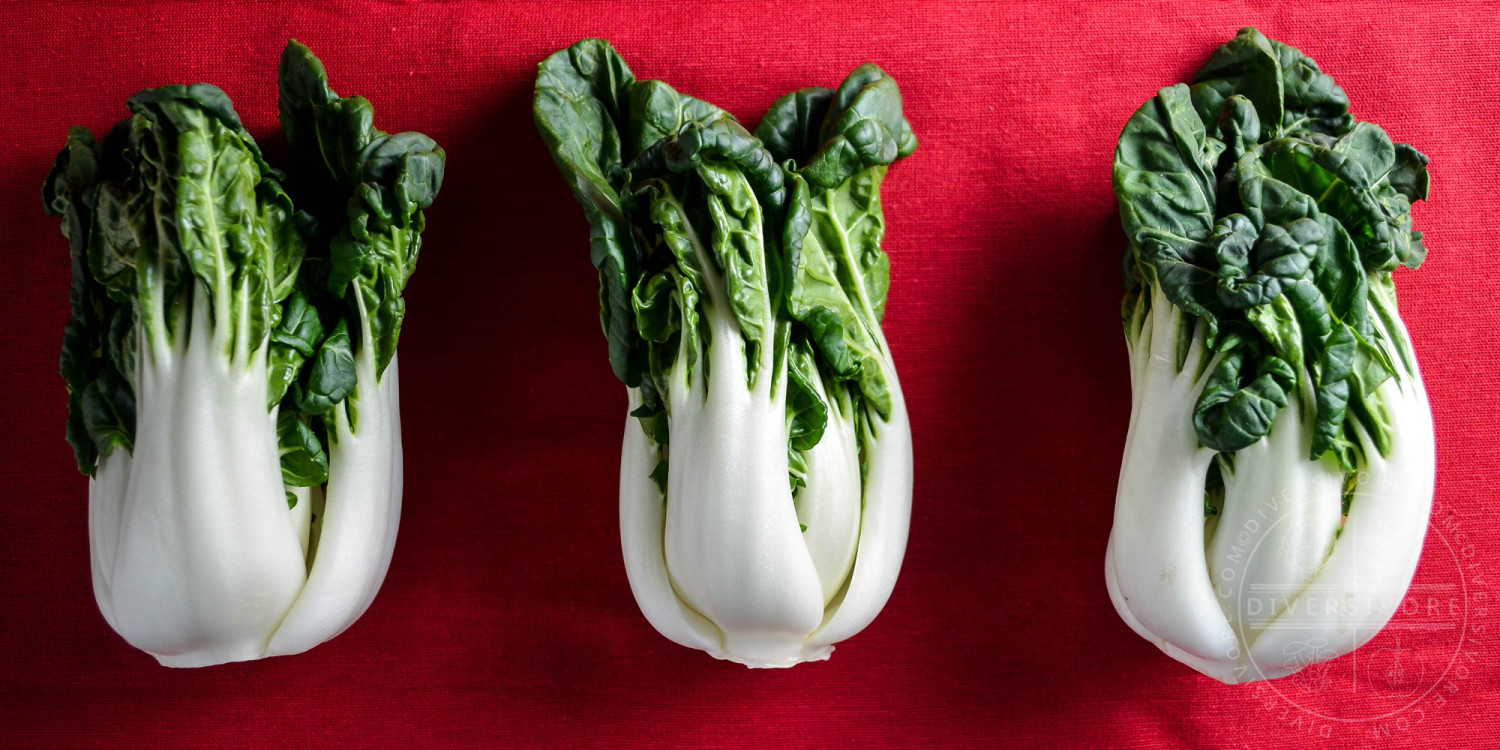Every month, Diversivore launches two new thematic features. This month’s ingredient page feature is all about Chinese green vegetables. Keep coming back for updates and recipes related to this theme, or subscribe to make sure you don’t miss out on anything new.
As the name Diversivore suggests, I strong believe in increasing both the biodiversity and cultural diversity of our food. In fact, it was my love of buying and cooking odd fruits and veggies and the resulting questions from curious shoppers (“What do you DO with that?”) that first planted the idea of starting a food blog in my mind.
But it’s not easy to suddenly start using a suite of new foods, and many of us fall back on the same ingredients over and over again, especially when it comes to vegetables. Part of the issue is availability of course; every grocery store carries potatoes and carrots after all, but you can’t always find mustard greens or black radishes. But familiarity can be a stumbling block too. If you’re unfamiliar with a vegetable, it can be intimidating to try buying or cooking it. Is it bitter, or sweet? What parts do you eat? Should it be cooked for a long time, or a short time? In my opinion, this prickly unfamiliarity really hits home in the produce section of a well-stocked Chinese grocery store. We tend to be well-acquainted with the leafy greens in a conventional grocery, and the selection tends to be fairly basic. You’ll find a few varieties of lettuce, spinach, cabbage, endive, and maybe the occasional oddity like escarole (which is really just endive that’s had its hair blown out). Oh, and kale. You’re not allowed to write a food blog and forget about kale. But Chinese grocery stores tend to present a veritable wall of green vegetables, many of which look similar. To add to the confusion, the names (which may be provided in any of several languages) seem to overlap one another (ong choy, choy sum, bok choy, lo bok, etc.) and English names are often omitted or wildly varied. To many, these obstacles prove insurmountable, but they really needn’t. Chinese leafy greens are actually quite easy to learn about, easy to cook with, and surprisingly versatile.
But perhaps you don’t live near a good Asian grocery store – what then? Well as it turns out, a lot of these vegetables are also stunningly easy to grow in a home garden. In fact, some of them are extremely cold-hardy, making them ideal for the gardener looking to extend their growing season.
This month, Diversivore will be expanding the catalogue of Ingredient Pages with a number of new entries designed to help shed some light on the myriad veggies found in Asian grocery stores. Of course that also means new recipes, so expect a suite of dishes that showcase the surprising versatility of these beautiful and highly nutritious leafy greens. I’ll be looking at some foods you might not have seen before, and helping to differentiate between some confusingly similar vegetables. I’ll also be exploring culinary options that reach beyond Asia, because many of these vegetables deserve to be eaten more widely.
Curious about a particular Chinese vegetable? Let me know in the comments, or send an email to [email protected].




Comments
I happen to live near a large Asian neighborhood with plenty of groceries, so I’m interested. i’ll be curious to see if you use these veggies in western foods, or eastern ones.